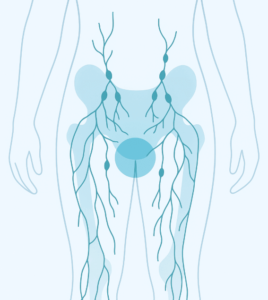Comprehensive Lymphedema Management Through Occupational Therapy Solutions
Introduction
Lymphedema, a chronic and often debilitating condition, significantly impacts the quality of life for those affected. It arises due to an abnormal buildup of lymphatic fluid, leading to swelling, typically in the extremities. For patients, the condition poses physical, emotional, and social challenges. However, a comprehensive approach to lymphedema management, primarily through occupational therapy, can provide significant relief and improve overall well-being.
Occupational therapy offers a holistic pathway to address lymphedema, focusing on physical interventions and empowering patients to manage their condition effectively. The role of occupational therapists is crucial in devising tailored lymphedema treatment plans that incorporate techniques such as manual lymph drainage, compression therapy, and patient education. This article explores the essential elements of managing lymphedema through occupational therapy solutions.
Understanding Lymphedema
Causes and Risk Factors
Lymphedema occurs when the lymphatic system cannot drain lymph fluid efficiently, leading to localized swelling. Primary lymphedema, often congenital, stems from abnormalities in the lymphatic system’s development. In contrast, secondary lymphedema arises from damage to the lymphatic system due to factors like lymph node removal, cancer treatment, or radiation therapy. These risk factors underscore the importance of early diagnosis and intervention to prevent the progression of lymphedema.
Symptoms and Stages of Lymphedema
The symptoms of lymphedema include persistent swelling, heaviness in the affected limb, and changes in skin texture. Lymphedema progresses through distinct stages, from mild swelling that subsides with rest to severe lymphedema characterized by significant and permanent swelling. Stages of lymphedema include:
- Stage 0: Latent stage with no visible symptoms.
- Stage 1: Reversible swelling that may improve with elevation.
- Stage 2: Persistent swelling and tissue fibrosis.
- Stage 3: Severe swelling, skin thickening, and potential infection risk.
Early intervention is critical to manage symptoms effectively and improve outcomes for patients with lymphedema.
Psychological and Social Implications of Living with Lymphedema
The impact of lymphedema extends beyond physical discomfort. Patients often experience feelings of isolation, embarrassment, and frustration due to visible swelling and the lifestyle adjustments required for managing the condition. This emotional burden highlights the necessity of comprehensive care, including psychological support and counseling, to help patients navigate the challenges of living with lymphedema.
Occupational Therapy Approaches
Assessment and Individualized Treatment Planning
Occupational therapists are skilled in assessing the unique needs of lymphedema patients. This involves thoroughly evaluating the patient’s physical condition, medical history, and daily activities. An individualized treatment plan is then developed to mitigate symptoms and improve the patient’s quality of life.
Occupational therapy programs aim to restore functional independence while addressing physical and emotional challenges. This personalized approach ensures that patients’ specific goals and lifestyle needs are met.
Techniques Used in Occupational Therapy for Lymphedema Management
- Manual Lymphatic Drainage (MLD): A cornerstone of lymphedema therapy, MLD involves light massage techniques to stimulate lymphatic flow and reduce swelling. Certified lymphedema therapists are trained in performing MLD, which helps manage lymphatic fluid buildup and alleviates discomfort.
- Compression Therapy: Compression garments and bandages are vital in maintaining reduced swelling. Occupational therapists educate patients on proper garment usage and ensure a comfortable fit, preventing further complications.
- Exercise and Movement Strategies: Regular, targeted exercises improve lymphatic circulation and reduce the risk of secondary lymphedema. Occupational therapists design exercise regimens tailored to patients’ abilities and goals, encouraging active participation in their rehabilitation journey.
Education and Self-Management Strategies for Patients
Empowering patients through education is a key aspect of occupational therapy. Therapists teach patients about skin and nail care, the importance of consistent compression garment use, and strategies to minimize the risk of lymphedema progression. By equipping patients with knowledge and practical tools, occupational therapy fosters independence and confidence in managing their condition.
Benefits of Occupational Therapy in Lymphedema Management
Improvement in Physical Function and Quality of Life
Occupational therapy interventions significantly enhance patients’ physical abilities, enabling them to perform daily activities more efficiently. Techniques such as manual lymph drainage and complete decongestive therapy reduce swelling and alleviate discomfort, improving overall mobility and quality of life.
Enhanced Coping Strategies and Emotional Support
Living with lymphedema often involves navigating emotional challenges. Occupational therapists provide compassionate support, helping patients develop coping mechanisms to address frustration and isolation. Through therapeutic conversations and group sessions, patients gain a sense of community and understanding, vital for emotional well-being.
Long-Term Management and Prevention of Complications
Occupational therapy emphasizes the importance of long-term management strategies to prevent complications such as infections and severe lymphedema. Therapists guide patients in adopting healthy habits, including regular exercise, proper skin care, and adherence to compression therapy, to ensure sustained benefits over time.
Conclusion
Recap of the Importance of Comprehensive Lymphedema Management
Comprehensive lymphedema management is essential for improving patients’ physical and emotional outcomes. Occupational therapy stands out as a holistic approach, addressing the medical and lifestyle challenges associated with the condition. By integrating techniques like manual lymph drainage, compression therapy, and patient education, occupational therapy empowers individuals to take charge of their health.
Encouragement for Individuals to Seek Occupational Therapy Services
For those affected by lymphedema, seeking the guidance of an occupational therapist can be transformative. Certified lymphedema therapists, such as those at Phelps Health outpatient therapy services, offer specialized care to help patients manage their condition effectively.
Call to Action for Healthcare Providers to Integrate Occupational Therapy into Lymphedema Care Plans
Healthcare providers are pivotal in supporting lymphedema patients by incorporating occupational therapy into their care plans. By doing so, they can ensure that patients receive comprehensive and multidisciplinary support, leading to improved outcomes and enhanced quality of life.
FAQs
Q: What is lymphedema therapy and how does it work?
A: Lymphedema therapy involves a combination of treatments aimed at managing lymphedema, which is swelling caused by the buildup of lymph fluid in the affected area of the body. This therapy often includes decongestive therapy, which may encompass manual lymphatic drainage, compression garments, and exercises designed to facilitate lymph flow.
Q: What are the main treatments for lymphedema?
A: The treatment for lymphedema typically includes a comprehensive approach that may involve physical and occupational therapy, compression therapy, skincare, and in some cases, lymphedema surgery. Each treatment plan is tailored to the individual based on their lymphedema diagnosis.
Q: Who can provide lymphedema treatment?
A: Treatment for lymphedema can be provided by a variety of healthcare professionals, including occupational therapists, physical therapists, and specialized lymphedema therapists. These professionals must have specific training in lymphedema management to ensure effective care.
Q: How does breast cancer relate to lymphedema?
A: Breast cancer patients are at a higher risk for developing lymphedema, particularly if they have undergone surgery involving lymph node removal or radiation therapy. This can lead to secondary lymphedema in the affected arm or other areas of the body.
Q: What is the difference between primary and secondary lymphedema?
A: Primary lymphedema is a rare condition caused by congenital malformations of the lymphatic system, while secondary lymphedema is often a result of surgery, radiation, infection, or injury that affects the lymph nodes or veins. Understanding the type of lymphedema is crucial for determining the appropriate treatment.
Q: Can lymphedema go away on its own?
A: Unfortunately, lymphedema does not typically go away on its own. While some patients may experience temporary reductions in swelling, ongoing management and treatment are usually necessary to control the symptoms and prevent complications.
Q: Do patients need a referral to receive lymphedema therapy?
A: Yes, in many cases, patients need a referral from their primary care physician or oncologist to access lymphedema therapy services. This helps ensure that they receive a comprehensive evaluation and appropriate treatment plan tailored to their needs.
Q: What role does an occupational therapist play in lymphedema management?
A: An occupational therapist with expertise in lymphedema management can help patients develop strategies for daily living, recommend compression garments, and provide exercises to improve lymphatic drainage. They play a vital role in the overall rehabilitation services for lymphedema patients.
Q: What are the signs and symptoms of lymphedema?
A: Common signs and symptoms of lymphedema include swelling in the affected area, a feeling of heaviness or tightness, restricted range of motion, and recurrent infections. Early lymphedema diagnosis and treatment are important to prevent progression.
Q: Can lymphedema therapy be effective for all patients?
A: While lymphedema therapy can be highly effective for many patients, results may vary based on individual circumstances, including the severity of the condition and the patient’s overall health. A tailored treatment plan developed by a qualified therapist can maximize the chances of success.





